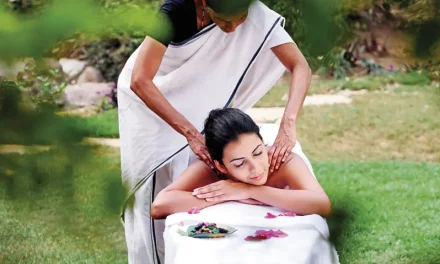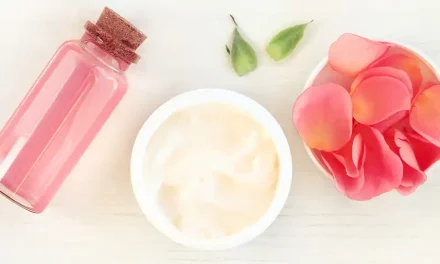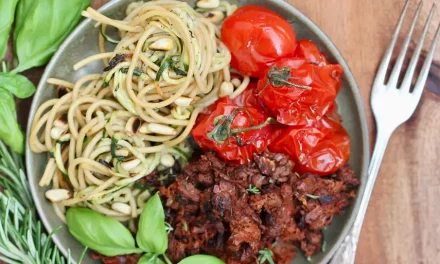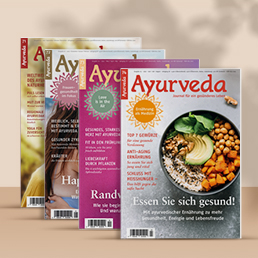Vata, Pitta or Kapha – which Ayurveda type am I? This is the first question we ask ourselves when we start to learn about Ayurveda. But why does the knowledge of the individual constitution – the dosha type – play such a big role in Ayurveda and how does this help me to lead a healthier and happier life? This and more you will learn in this article.
What does Dosha mean and what are Vata, Pitta and Kapha?
The heart of Ayurveda and the center of Ayurvedic teachings is the determination of the individual constitution (Prakriti). Prakriti translated means “nature” and includes physical and mental characteristics of the individual. The physical constitution of each person is composed of the three dosha types Vata, Pitta and Kapha in different weights.
-> Now directly to the free Dosha test and find out your Ayurvedic Dosha type!
In Ayurveda, the human being is considered a microcosm of the world. All five elements that ayurvedically occur in nature – and that are space (or ether), fire, water, air and earth – are also found in humans. And they connect us to the world. Since in every human being at birth the elements are differently pronounced, Ayurvedic medicine assumes a great human individuality.
Vata is that which makes alive. It is the mover in everything. The wind, in nature and the energy that makes us walk, run or dance. Vata is dry, light, harsh and cold. Pitta, on the other hand, provides the energy that transforms and is the fire within us that provides a sharp mind and a strong metabolism. Fire is hot, light, somewhat oily and we must be careful not to let it overflow. Kapha is the earth surrounding us and everything within us that provides strength and stability. Kapha is moist, cooling and heavy.
These three doshas are thus found not only in nature, but also in our body – in every tissue and every single cell. For us to be healthy and happy, it is important that the three doshas are in a state of balance. If this is not the case, health disorders will develop. For this reason, the knowledge of one’s own constitution plays a decisive role in Ayurveda in the context of health prevention and therapy.
Your Ayurvedic constitutional type is your unique, individual genetics. If you know and understand your Dosha type, you can align your life on all levels so that you are sustainably healthy, happy and successful.
How to recognize your Dosha type
Some people are pure Vata, Pitta or Kapha types, others have one of the mixed constitutions Vata-Pitta, Vata-Kapha or Pitta-Kapha. The dosha mentioned first is always the more dominant one. However, there are also a few people in whom an equal distribution of all three doshas can be found.

The best way to explore your constitution – your individual core of being – is a detailed Ayurvedic consultation with an experienced Ayurvedic therapist or physician. However, some basic theoretical knowledge can help you understand your type better and more deeply.

The Vata type
In Ayurveda, Vata stands for the principle of movement and life energy and is
is composed of the elements air and ether. The headquarters of Vata lies in the
area of the large intestine. Wherever something moves within us, Vata is involved, as in the movement of the body, the activity of the mind or the movement of the breath.
Personality traits of the Vata type:
Vata types are creative, freedom-loving, spontaneous and full of joie de vivre, but can also be unreliable, rash and erratic. They are thirsty for knowledge, like to travel and prefer to always be on the move and on the go. In their nature, Vata people are communicative and talkative, open to new things and have many different interests, which they would prefer to pursue all at once. If Vata is elevated, they are prone to – often unfounded – anxiety, exhaustion, mind spinning and sleep disturbances.
Physical characteristics of the Vata type:
Vata people have a light, slender and flexible physique. They freeze quickly, tend to have dry skin, and are generally more sensitive in nature – as is their nervous system, immune system, and digestion. Cold and wind are not well tolerated by Vata and whenever possible they flee to warmer climes. Vata women tend to have irregular, light, short and sometimes very painful menstruation. Vatas have a changeable appetite and digestive disorders such as malabsorption and flatulence are not uncommon. Other typical disease tendencies are teeth grinding, tinnitus, joint cracking and joint diseases like arthritis or arthrosis, as well as heart diseases.
The Vata type summarized:
- Fast walking, always on the move, mentally and physically
- flexibility in mind and body
- tolerates raw and dry food less well
- Dry mucous membranes, skin, hair and nails, dry bowels
- Cracking joints
- Weak digestion and immune system
- Tendency to freeze, especially cold hands and feet
- Anxiety, sleep disturbance, inner tension

The Pitta type
The Pitta Dosha is composed of the elements fire and water.
and mainly determines the metabolism, the hormonal system and the heat balance. Pitta has its seat in the stomach, duodenum and small intestine.
Personality traits of the Pitta type:
Pitta people are charismatic, dynamic and powerful personalities who love challenge and competition. They have a sharp mind, are very goal-oriented and ambitious, have good assertiveness and perfectionist tendencies. The same high demands they have on themselves they have on others and they are not easily satisfied. However, if the Pitta type is under too much pressure, this manifests itself in aggressive behavior or anger.
Physical characteristics of the Pitta type:
Pitta people have a medium and rather athletic build with a consistent weight. Their strong metabolism ensures that they have great appetite and thirst. Skipping meals, they do not tolerate well at all and then quickly become “hangry”. Because fiery Pitta provides heat, sharpness and acidity, Pittas are prone to skin problems, hyperacidity and inflammation. The fire also causes Pitta types to often sweat quickly and profusely and tend to prefer cooler climates. Female Pittas tend to have heavy, long, but regular menstruation.
The Pitta type summarized:
- physically and mentally powerful
- strong digestive fire, strong appetite and thirst
- often does not tolerate fatty foods well
- tendency to diarrhea
- oily skin and tendency to skin problems and rashes
- fiery temper causes premature graying and hair loss
- loves sports challenge and competition
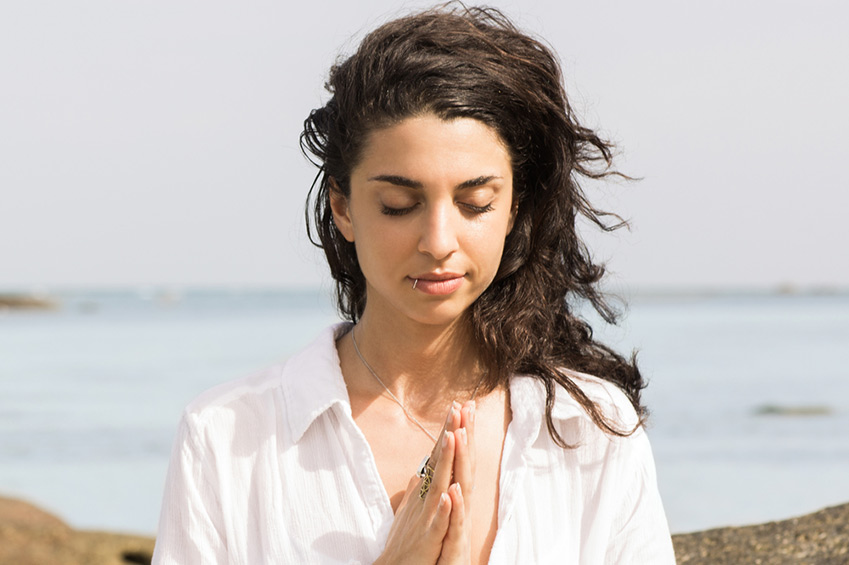
The Kapha type
Kapha is composed of the elements of water and earth and represents everything in the organism that gives stability, structure and moisture. It has its seat in the upper part of the stomach and in the chest.
Kapha Type Personality Traits:
Kapha types are level-headed, steady and loving people with a good long-term memory. They are loyal, compassionate and diplomatic. Even though they may seem a bit sluggish at times, they have excellent perseverance and patience and successfully achieve long-term goals. Kaphas are very good sleepers and like to sleep a lot. However, if Kapha is excessive, this can manifest as greed, attachment, and sluggishness.
Physical characteristics of Kapha type:
Kapha types have a strong and powerful body, large eyes, supple pale skin and silky hair. They have a regular appetite, love to eat and are true epicures. It is especially hard for them to say no to desserts. However, due to their slow metabolism, they gain weight relatively easily and tend to be overweight when Kapha is elevated. Kapha types are blessed with a good immune system and enjoy long health and longevity. Typical disorders are sinusitis, bronchitis, water retention, obesity and diabetes.
The Kapha type in summary:
- calm, gentle and loving disposition
- tendency to gain weight
- large and stable bones
- strong body, strong immune system
- slow digestion, tendency to constipation
- good sleep
- cold and soft, oily skin, greasy hair
- tends to mucus in the head and chest area
- attaches great importance to partnership and family
The Vata-Pitta type
If the two doshas Vata and Pitta are dominant, we speak of a Vata Pitta or Pitta Vata constitution. Here the liveliness and vitality of Vata meet the strong dynamics and the ambition and intelligence of Pitta – an explosive mixture! Vata Pitta types are slim, athletic and powerful and have a good appetite. However, the sensitive digestion caused by Vata ensures that they have difficulty digesting larger quantities and often suffer from indigestion. During stress, nervousness and restlessness can alternate with anger and irritability.
The Pitta-Kapha type
In the Pitta Kapha constitution, the ambition and activity of Pitta are paired with the calm, endurance and constancy of Kapha. A true power combination that promises success and strong commitment. Tireless, persistent and powerful, they pursue their goals and achieve them. In Pitta Kapha types, the heavy physique is balanced by the strong metabolism of Pitta and they enjoy a strong appetite and good immune system that keeps them healthy and aging.
The Vata-Kapha type
Vata Kapha people are sensitive, creative and emotional personalities. Common to Vata and Kapha is the cold quality, which is why the Vata Kapha type needs lots of warmth and loving affection. Physically, Vata Kapha types tend to have digestive problems such as constipation and malabsorption, as well as colds or bladder infections.
The Tridosha type
When all doshas are present in an almost equal expression, one jumps from a tridosha type. However, this combination applies to only a few. They have a natural balance in body and mind, a normal digestive system, healthy skin and strong immune power. They are not particularly sensitive to heat or cold or any other particularly distinctive constitutional traits. Tridosha types are charismatic, creative and determined, but calm and grounded
The Ayurveda Dosha Test: Vata, Pitta or Kapha?
With the following test you can find out your currently most pronounced dosha. A test cannot determine whether you already possess this dosha dominance from birth or have acquired it in the course of life – however, this is also not necessary for the treatment of the accumulated dosha. However, the result of the test cannot replace the anamnesis of an Ayurvedic therapist or doctor and for a detailed diagnosis it is recommended to consult an expert.
What does my dosha type say about me?
Although it may seem so at first glance, Ayurvedic constitutional determination is not about stereotyping. The aim is rather to do full justice to the individuality of each person. And this is only possible if we take into account differences in metabolism, physical characteristics or mental states in the treatment of a disorder. No two people are alike. A Dosha test can give a first impression – but to see the exact distribution and expression of the Doshas, it always needs an Ayurvedic consultation with an experienced therapist.
But if you know your constitution or disorder, then this is the key to balance. Your diet, daily and nightly rhythms, form of exercise and overall lifestyle will be adjusted to this. You can then directly start to keep your constitution in balance.
Recognize constitutional disorders in time
Each of us is born with a very individual composition of the three doshas Vata, Pitta and Kapha, which is the best possible composition for us and keeps us healthy and happy. We try to return to this state again and again. However, this composition is not static, but is continuously changing, every minute, with every time of day and season. Our way of life, social and cultural imprint, the kind of food we eat or even the weather and climate, for example, can cause certain doshas in us to increase or others to decrease. This is perfectly normal and natural. However, if we live a life in harmony with our constitutionally determined needs, embedded in the rhythms of nature, then these changes always balance each other out.
However, if we don’t pay vigilant attention to our needs – the natural desire for warming foods in winter, the shady place we seek out in the midday heat, or the periods of rest we regularly crave – we may find ourselves drifting further and further away from our natural ground state, and certain doshas may continue to accumulate within us. You can visualize this like a barrel that gets fuller and fuller until it overflows and then causes problems. The goal is then to lower the accumulated doshas again so that we can live free of health disorders.
Vata disorder
Vata is the most sensitive and disease-prone Dosha type. When the world around and within us gets busy, autumn approaches with its windy storms, the stressful phase at work lasts longer than expected, or we permanently feed on dry, low-fat and cold foods, a Vata disorder can develop. In a Vata disorder, Vata accumulates in us in the form of dryness, lightness, coldness or movement to such an extent that certain tissues or bodily functions change. We feel anxious and have self-doubt, our sleep becomes restless, we suffer from bloating, get dry skin and mucous membranes, and feel less and less grounded and connected to ourselves. Long-lasting Vata disorders can lead to health problems such as degenerative arthritis, amenorrhea or dysmenorrhea, osteoporosis or even heart disease, among others.
Pitta disorder
Pitta disorders arise primarily from too much heat and acidity – both physical and mental. Anger and pressure at work, constant heated discussions with our partner, regular consumption of fatty, spicy and acidic foods and indulgence in meat and alcohol or too frequent sunbathing increase Pitta in us. We notice this by the fact that we are more easily drawn out and quickly react irritably, suffer from heartburn, skin problems, small inflammations or excessively heavy menstruation. Long-lasting Pitta disturbances can lead to inflammations in the stomach and intestinal tract, inflammatory joint diseases or liver disorders, among other things.
Kapha disorder
Every one of us feels listless, heavy and sluggish at times, or perhaps has phases in which we don’t exercise enough or eat more heavy, fatty or sweet foods. If these phases continue over a long period of time, Kapha increases. We notice this in the fact that we are constantly tired, gain weight, mucus formation in the forehead and sinuses or constipation and digestive disorders develop or perhaps water retention. In the long term, chronic bronchial and respiratory disorders, obesity or diabetes may develop.
The best tips for your Ayurveda lifestyle
If we live a life that is adapted to our Dosha type, we take our natural bodily needs (hunger, thirst, sleep, urge to urinate, etc.) seriously and regularly feel inside ourselves what is good for us and what is not, then we can have a great influence on our health and well-being, both physically and mentally. These tips will help you do that!
| Vata | Pitta | Kapha | |
| Daily rhythm | at least 8 h sleep, go to bed early | About 6-7 hours of sleep | About 6-7 hours of sleep |
| Nutrition | warm, oily and nourishing food with the flavors sweet, sour and salty | cooling, nourishing food with the flavors sweet, bitter and astringent | light, warm and stimulating foods with bitter, astringent and spicy tastes |
| Beispiele für Mahlzeiten | Oat porridge with steamed fruit and cinnamon; sweet potato curry with rice, kitchari. | Granola with fresh fruits; coconut dhal with green vegetables; cucumber gazpacho. | Spicy ginger tea and chyawanprash; vegetable stir-fry; red chickpea curry with wild rice. |
| Snacks example | Dates filled with almond butter, sweet fruits | Green smoothie, watermelon, coconut pieces | spicy ginger sticks, roasted spicy chickpeas, corn waffle |
| Spices | Warming and stimulating spices such as cinnamon, cloves, cumin, hing/asfoetida, long pepper, ginger, coriander, nutmeg. | Mild and cooling spices such as licorice, turmeric, coriander, mint, lemon balm, tarragon, sage , long pepper and saffron. | Hot and stimulating spices such as cinnamon, garlic, chili, bell pepper, cumin, ginger, paprika, bay leaf. |
| Beverages | Warm ginger tea, chai tea, sweet fruit juices | Room-temperature or lukewarm sweet and bitter teas, sweet fruit juices | Hot and stimulating teas, juices made from cranberries, grapes, pomegranates or plums |
| Ayurveda home pharmacy | Ashwagandha to promote sleep, Brahmi to strengthen nerves, Hingvasthaka for flatulence, Haritaki for defecation. | Amalaki as Rasayana, Nimba for purification, Sariva for cooling, Avipattikara for heartburn. | Turmeric for metabolic regulation, Trikatu for expectoration, Ajwain for digestion, Tulsi for cough, Vasta for respiratory disorders. |
| Leisure activities | Creative and artistic activities, time in nature, yin yogaYin Yoga | Sports, yoga to balance stress, time in nature | Activating sports |
| Yoga exercises | Standing exercises like tree, trikonasana that promote calmness and concentration | Sphinx or supportive shoulder bridge that cool and grounding | Sun salutations and dynamic exercises that get Kapha going |
| Massages | Warm oil massages with sesame oil or medicated Vata oil | Oil massages with coconut oil or medicated pitta oil | Garshan dry massage or stimulating oil massage with Kapha oil |
| Colours | warming and grounding shades (e.g. gold, wine red, olive green) | cool and calm colors (e.g. blue, white, pink) | warm and strong colors (e.g. orange, red, pink) |
| Essential oils | e.g. lavender, clove, cinnamon, basil, galangal, sandalwood | e.g. rose, mint, sandalwood, vanilla | e.g. rosemary, camphor, lavender , eucalyptus |

 © Stocksy.com / Iluliia Versta
© Stocksy.com / Iluliia Versta 